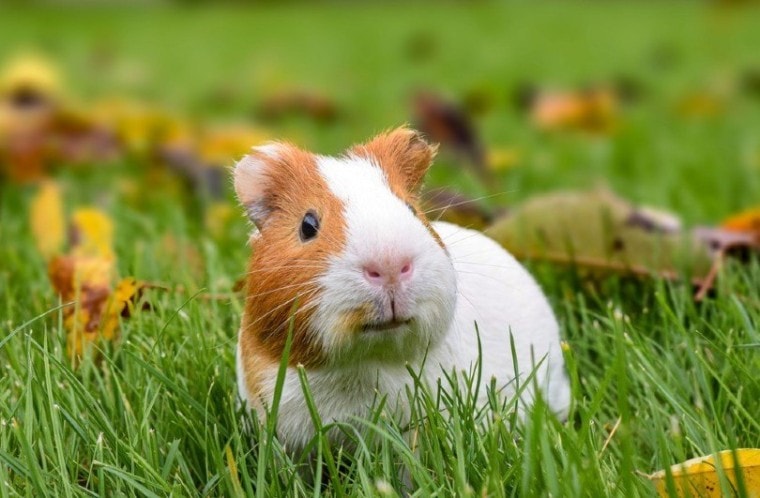
Provide your guinea pig grass hay (Timothy or orchard brome is best) all the time in unlimited amounts.
¼ of a cup of guinea pig pellets can also be provided daily if you feel your piggy needs more sustenance.
Image Credit: The Escape of Malee, Shutterstock Guinea pigs do not need baths but can be spot-cleaned with a damp cloth or an unscented baby wipe when needed.
Many guinea pig owners will put their piggy in a large area on their tiled or hardwood floor, bordered with some sort of fence to keep them from escaping.
Inside the play area, put objects like boxes, paper bags, or pipes they can fit through.
In normal health, your guinea pig will be alert, active, eat and drink every day, walk around, and squeak frequently!
Respiratory infections in guinea pigs look a lot like allergies: runny nose and eyes, sneezing, trouble breathing, and coughing, to name a few.
Guinea pigs are believed to have originated from the Andes in South America, not as wild animals, but as domesticated from the start.
The initial purpose of their domestication was for meat, but as they were brought into North America and Europe in the 16th century, they became popular as household pets.
Guinea pig coat colors come in a vast variety, all within black, brown, and white categories.
Not only do they tend to thrive better with a roommate guinea pig, they also enjoy routine interaction with their human and will happily approach a hand that’s placed in their cage.
It may surprise you that these creatures need daily interaction and feeding, unlike smaller rodents (like hamsters) that can be left alone for a few days at a time.
Guinea pigs also need fresh food, hay, fruits, and veggies provided to them daily, as well as water.
Make sure to put the cage where there are normal patterns of night and day, and keep it out of bedrooms to keep your sleep undisturbed.
Image Credit: StineMah, Shutterstock Your guinea pig’s diet will consist mostly of Timothy (or grass) hay, which is also what rabbits eat.
Grasses are perfect for guinea pigs, as they provide lots of soluble and insoluble fiber, as well as many other nutrients that they need.
The abrasive nature of the grass also aids in filing down guinea pigs’ teeth, which never stop growing.
Because of this, you will need to supplement their diet with fruits and vegetables rich in vitamin C. In a ¼ to ½ c. measuring cup, you can pack any of these fruits and vegetables: kale, mustard, dandelion, or collard greens, sweet peppers, apples, pears, broccoli, cucumber, basil or parsley and feed it to your guinea pig daily.
Your guinea pig will also need a clean supply of water, provided in either a heavy-bottomed dish (to prevent knocking over) or a bottle fastened to the cage.
Now you know how to take care of a guinea pig and you’ve decided they are for you, we wish you luck on your search for your next pet pal and many years of joy with him or her!
Learn More

